In Xa Luong commune, Tuong Duong district, Nghe An province, where the Nam Mo and Nam Non rivers converge to form the Lam river, there is a famous ancient tree. The ancient banyan tree with its many twisted roots looks like a thousand giant snakes embracing the relic of Tuong palace gate.
The relic of Tuong Palace Gate at the famous river junction in Nghe An
Cua Rao 1 Village, Xa Luong Commune, Tuong Duong District is the confluence of the Nam Mo and Nam Non rivers. After the confluence, this is considered the source of the famous Lam River.
In the past, the river confluence area was also the location of the administrative headquarters of the Western Nghe An region.
The most famous of these are Tuong Palace, Van Temple, and Rao Temple. The fertile land and convenient transportation by both water and road help people have a prosperous life.
The Tuong Palace at that time was built on a large scale, with a very large campus. The puppet government stationed troops here.
The August Revolution succeeded, the resistance war against the French was victorious, the puppet government lost power and fled from Tuong Palace. Tuong Palace later became the headquarters of the revolutionary government.
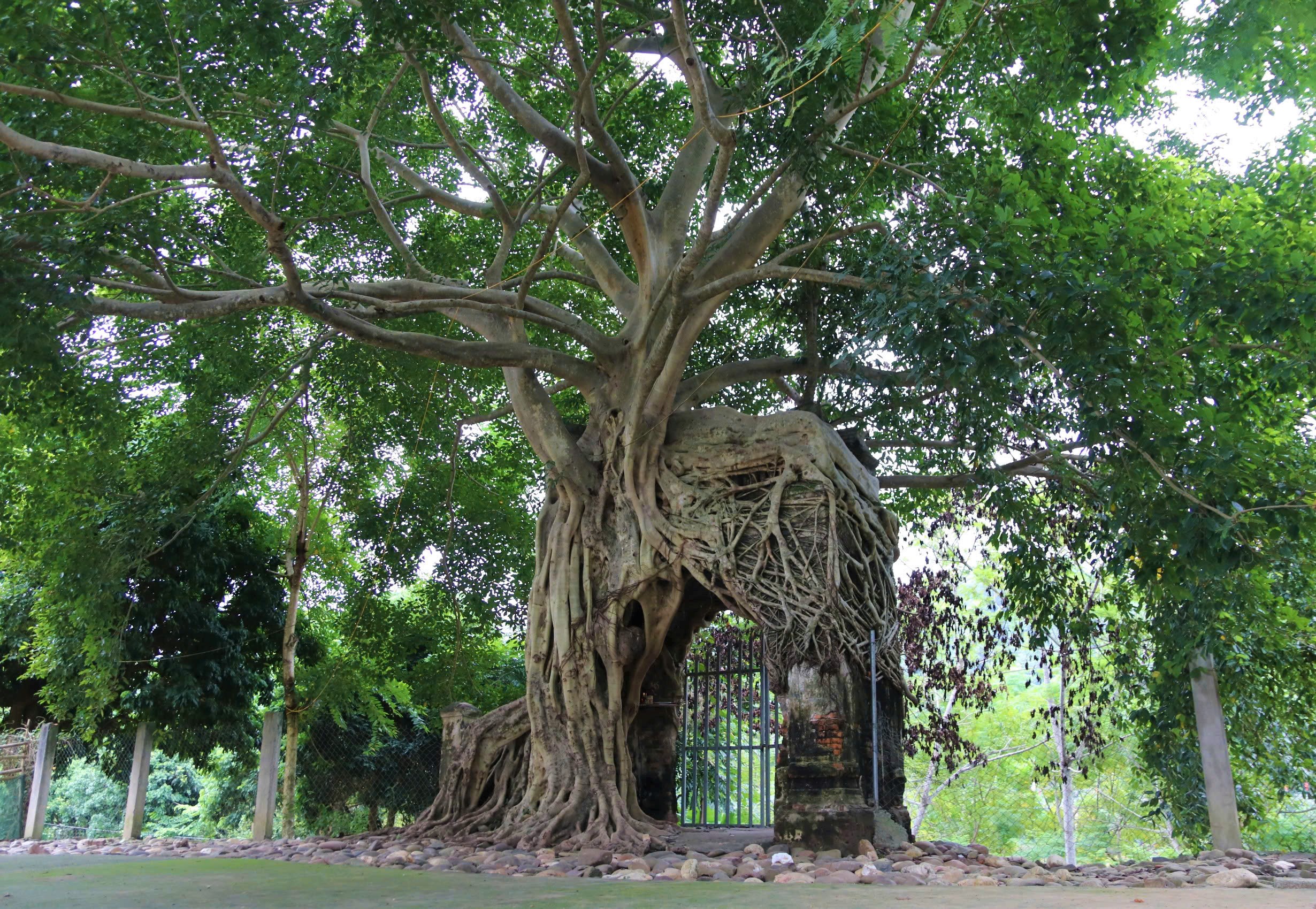
The banyan tree embraces the Tuong Palace gate relic in Xa Luong commune, Tuong Duong district, Nghe An province. Photo: NT
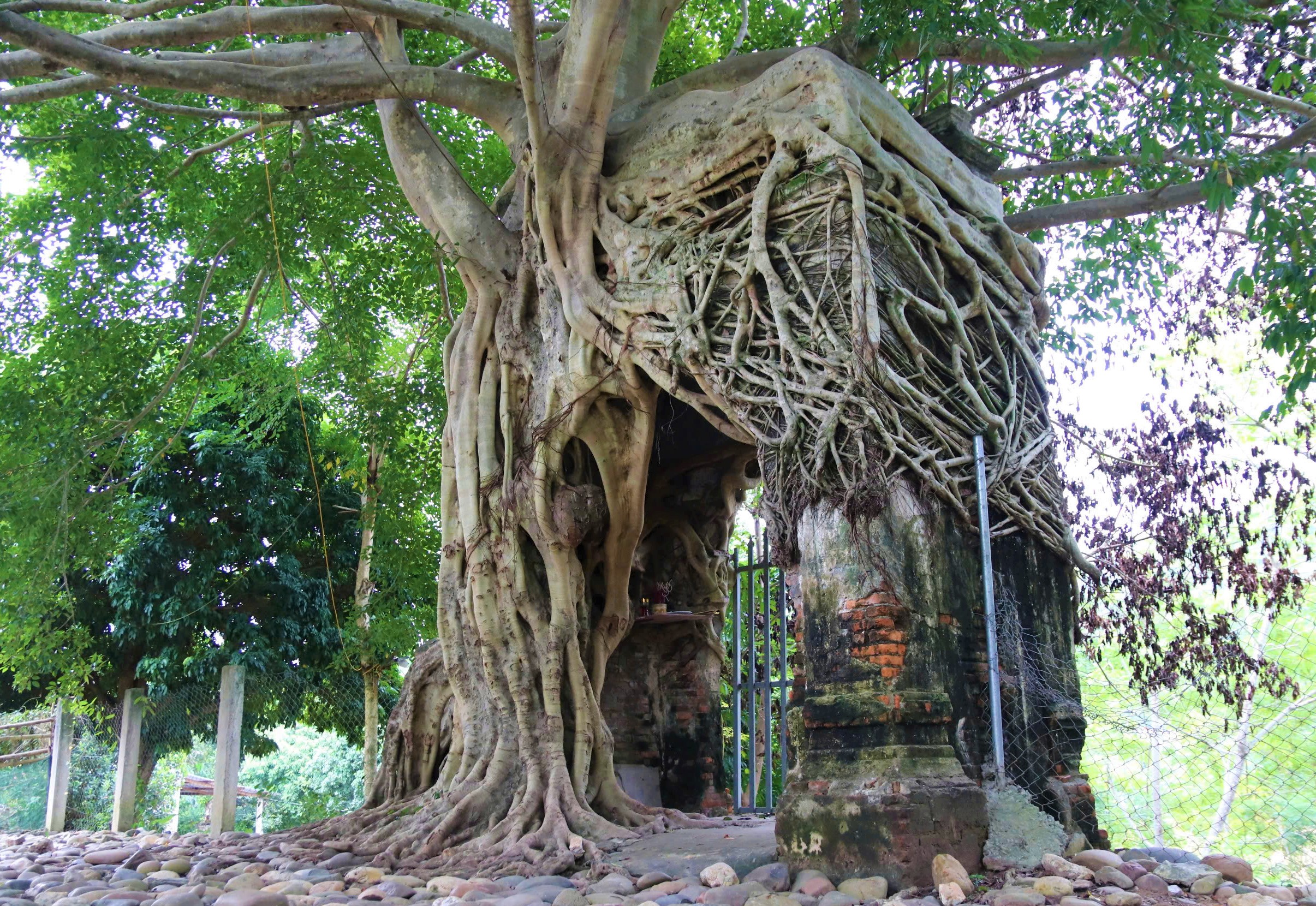
The banyan tree's trunk and branches embrace the entire structure of the Tuong Palace Gate relic, forming a protective layer. Photo: NT
When the administrative agency moved to Hoa Binh town, the Tuong prefecture campus became the hospital headquarters, then the commune health station.
Later it was converted into a secondary school. Over time, the Xiang Palace gradually deteriorated. During the construction process, the buildings of the Xiang Palace were demolished. Currently, the Xiang Palace only has a gate built of bricks left.
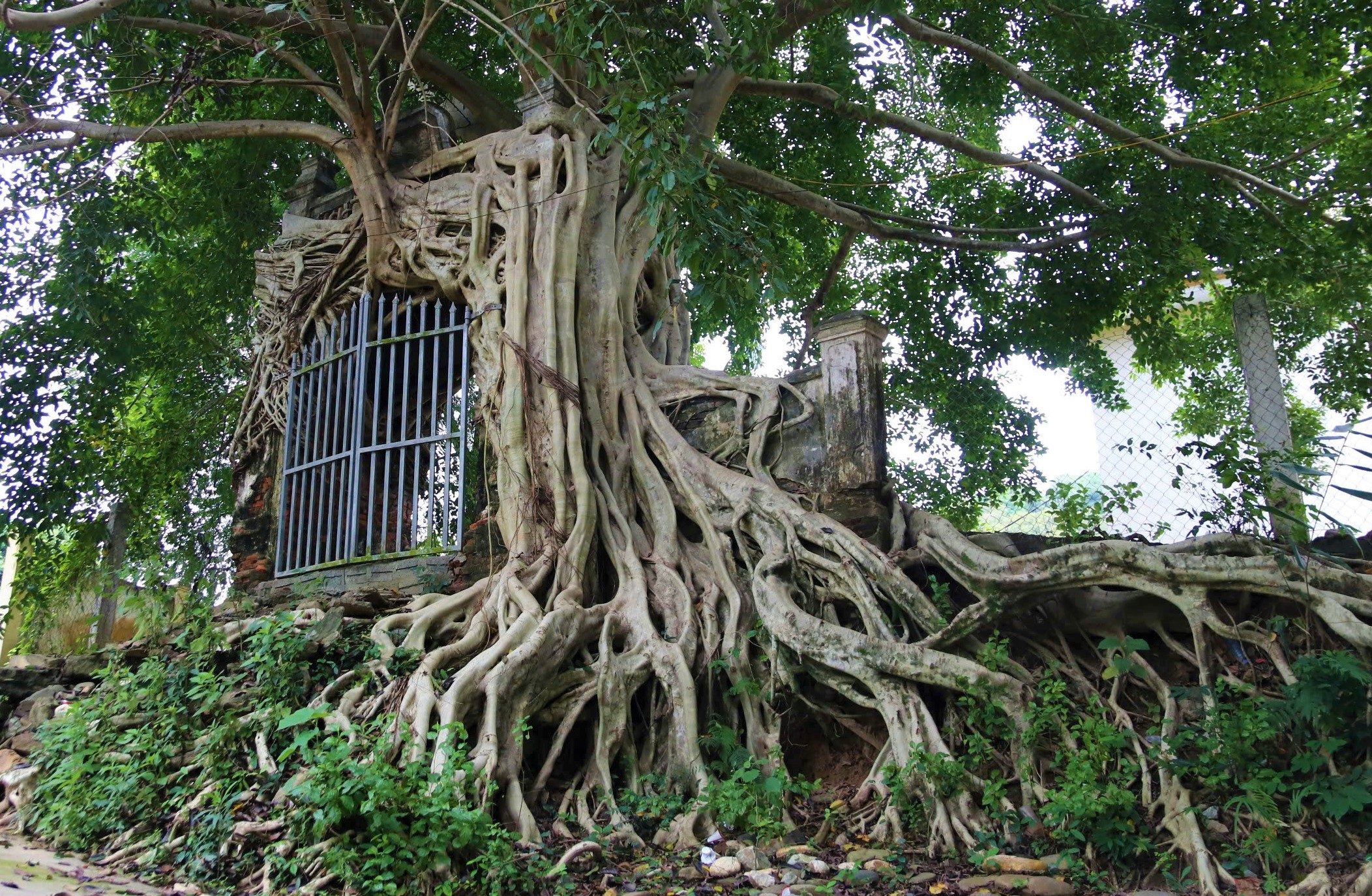
The roots of the banyan tree are like a waterfall, with a rare, natural beauty. Photo: NT
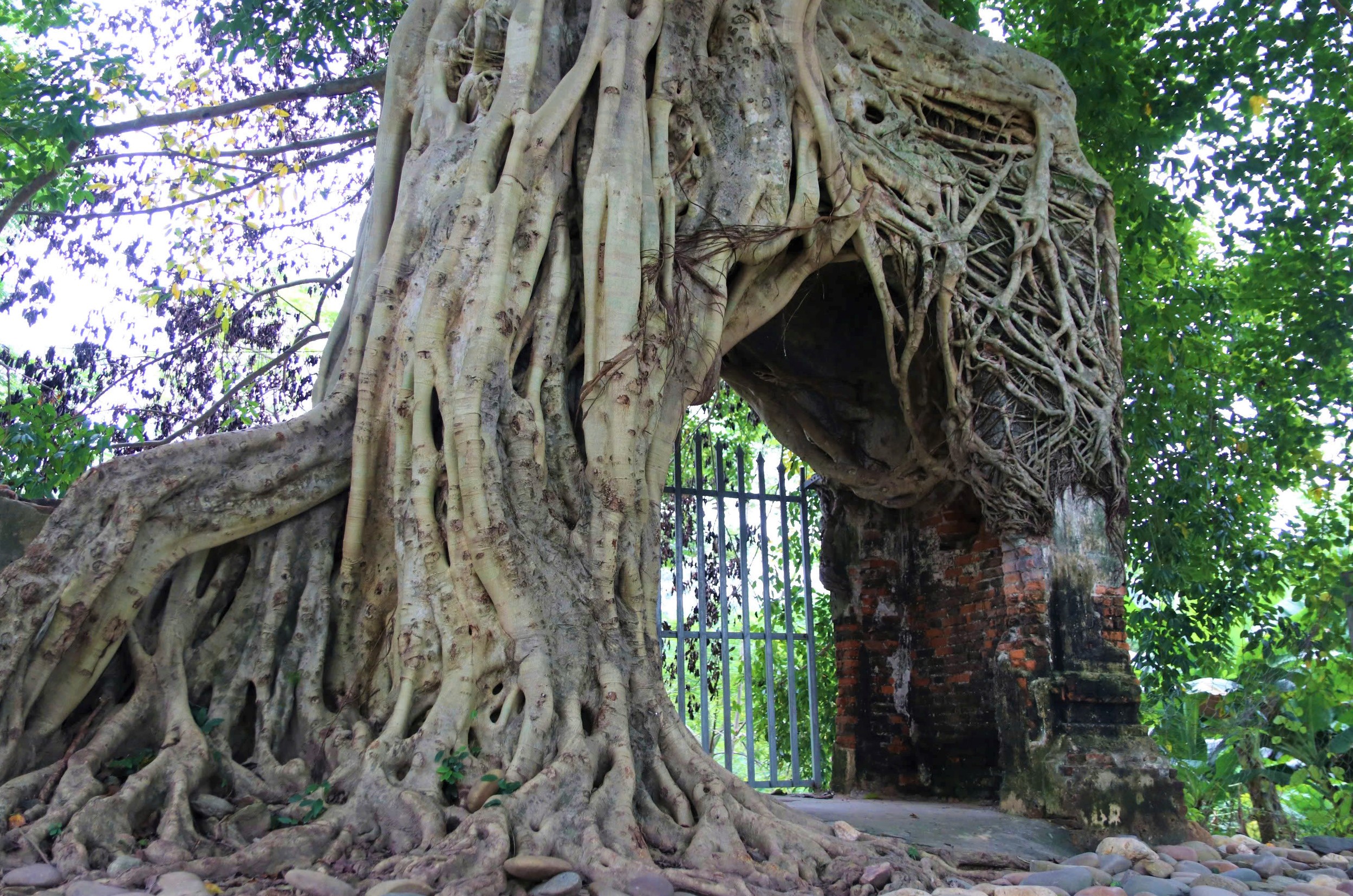
The banyan tree creates a solid protective layer that helps the Tuong Palace gate relic survive over time. Photo: NT
The people of Xa Luong commune today cannot remember when the Tuong Palace gate was built. They only know that when they grew up, they saw the Tuong Palace gate there. There is a large banyan tree stretching out to hug each structure of the Tuong Palace, helping it to last through time.
The ancient tree - the banyan tree embracing the gate of Tuong Palace is like a wonder of nature.
Over the years, the roots of the banyan tree gradually covered each structure, creating a perfect protective layer to help the Tuong side gate stand firm. Because the structures of the Tuong palace were originally built of bricks, over time they have deteriorated. Many locations have been eroded and damaged.
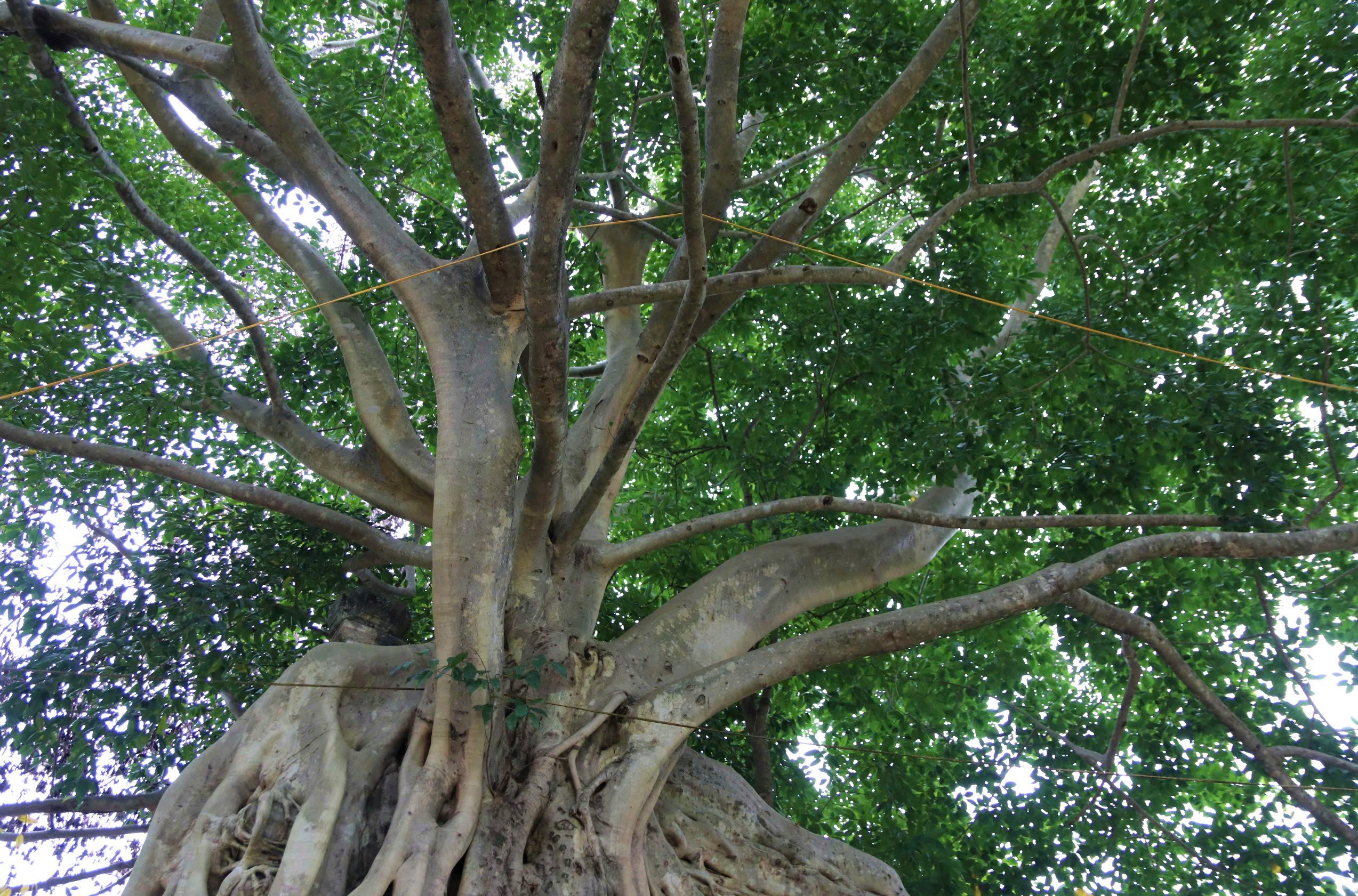
The banyan tree trunks converge at one point and then stretch out to form a giant umbrella. Photo: NT
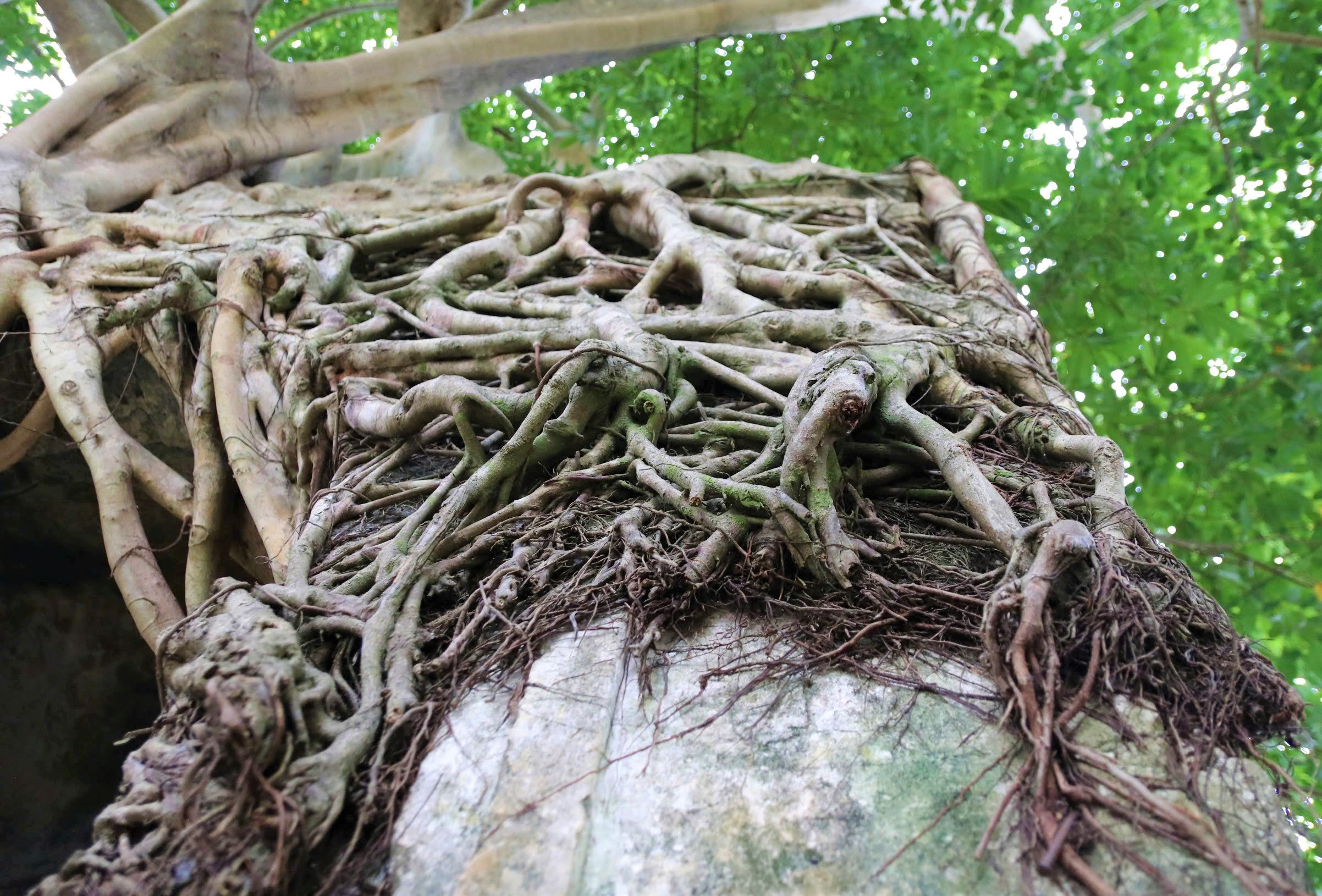
The roots cling tightly to every structure of the Tuong Palace gate relic in Xa Luong commune, Tuong Duong district, Nghe An province. Photo: NT
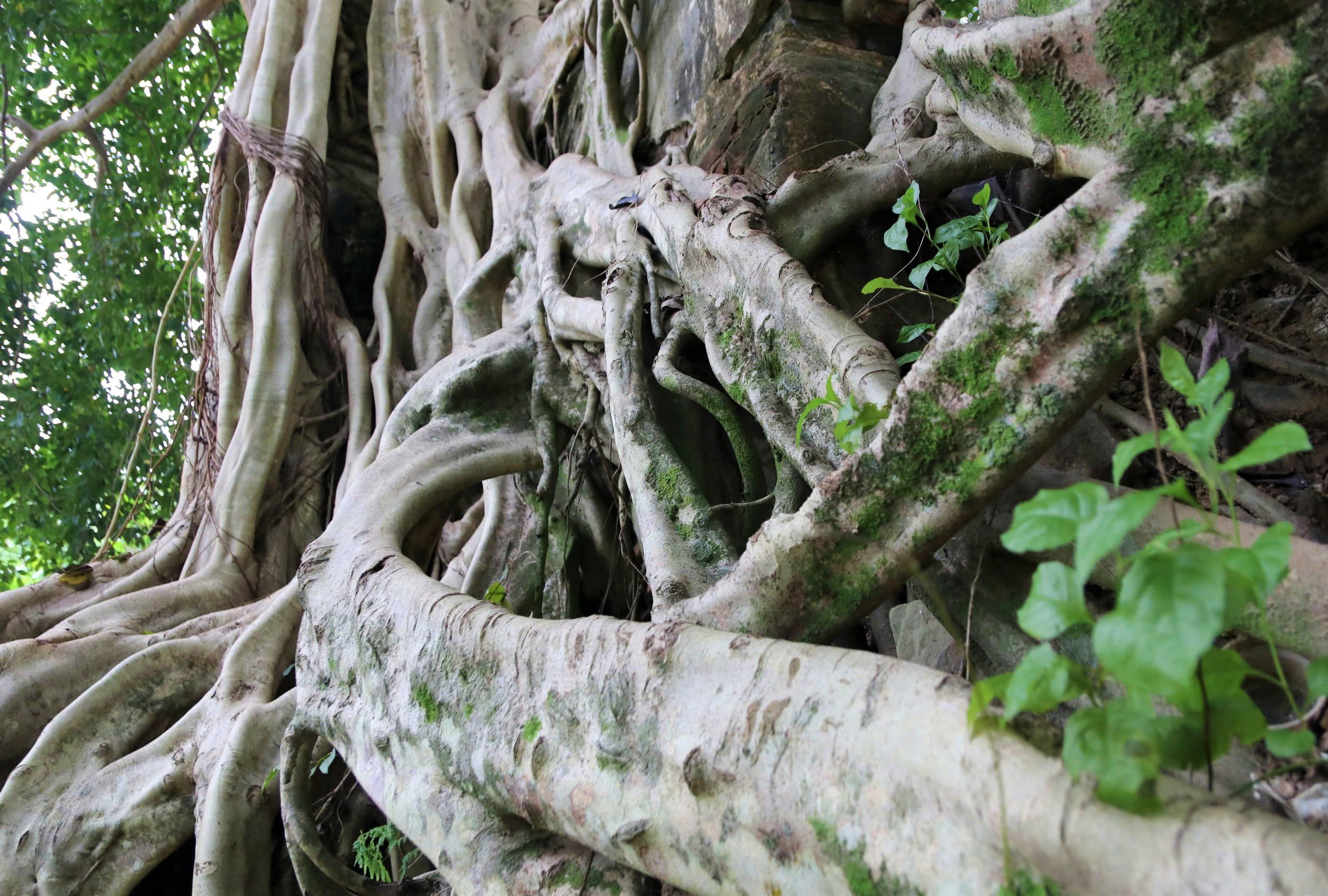
Each large root tightens more and more, embracing the relic of Tuong Palace gate. Photo: NT
Over time, the banyan tree grew larger. Its roots and trunk embraced the Tuong Palace Gate. Each branch of roots twisted and tightened, embracing the Tuong Palace Gate. The intricate system of trunks and roots followed the gate but gathered at the top of the gate to spread out a large canopy of leaves like a giant umbrella.
From afar, the large banyan tree embracing the Tuong Palace gate looks like a masterpiece of nature. Under the arch of the gate, the locals set up an altar and burned incense for the gods. Many bonsai lovers are fascinated when they see this masterpiece.
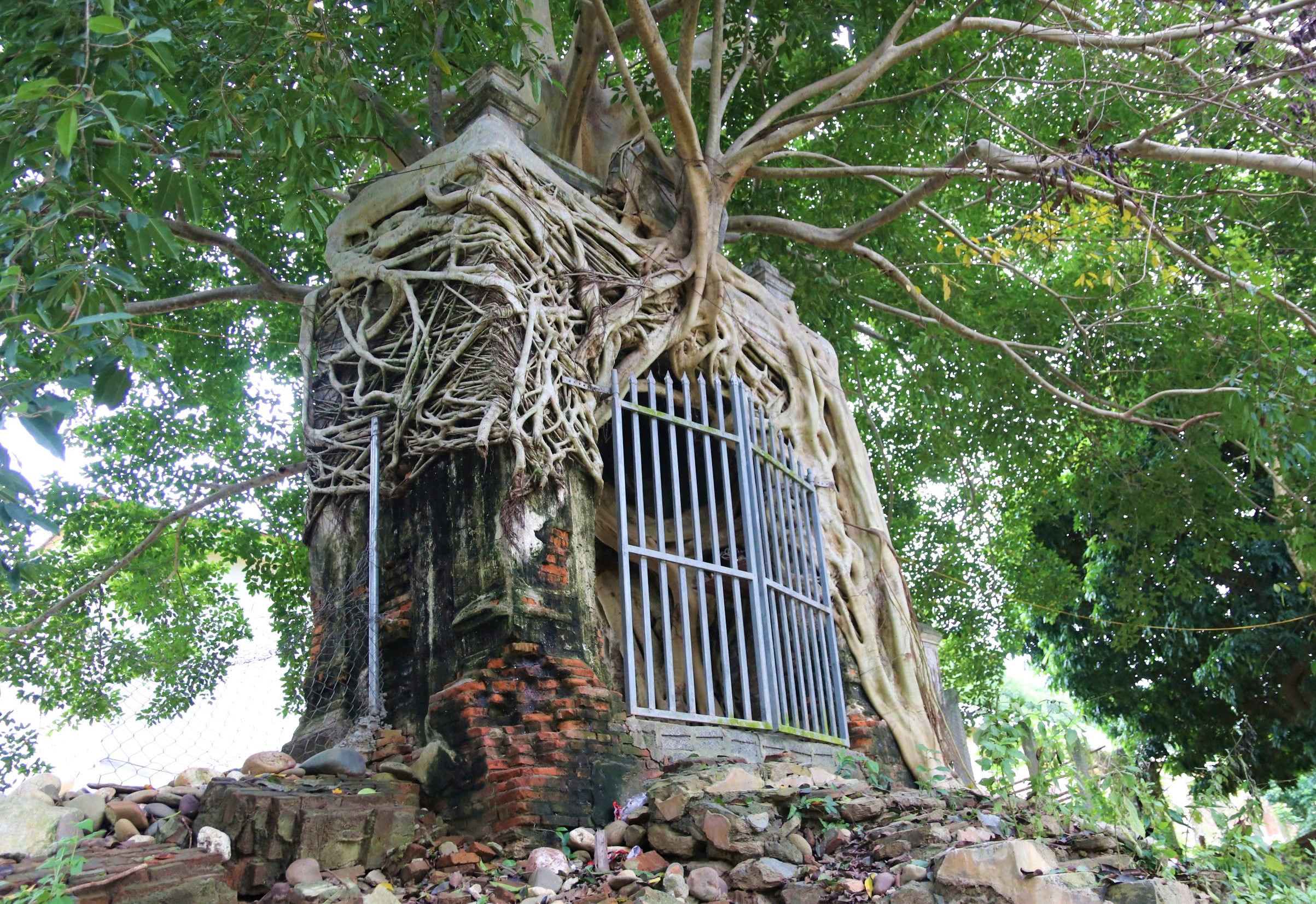
Bonsai lovers are fascinated when they see the banyan tree hugging the gate of Tuong Palace in Xa Luong Commune, Tuong Duong District, Nghe An. Photo: NT
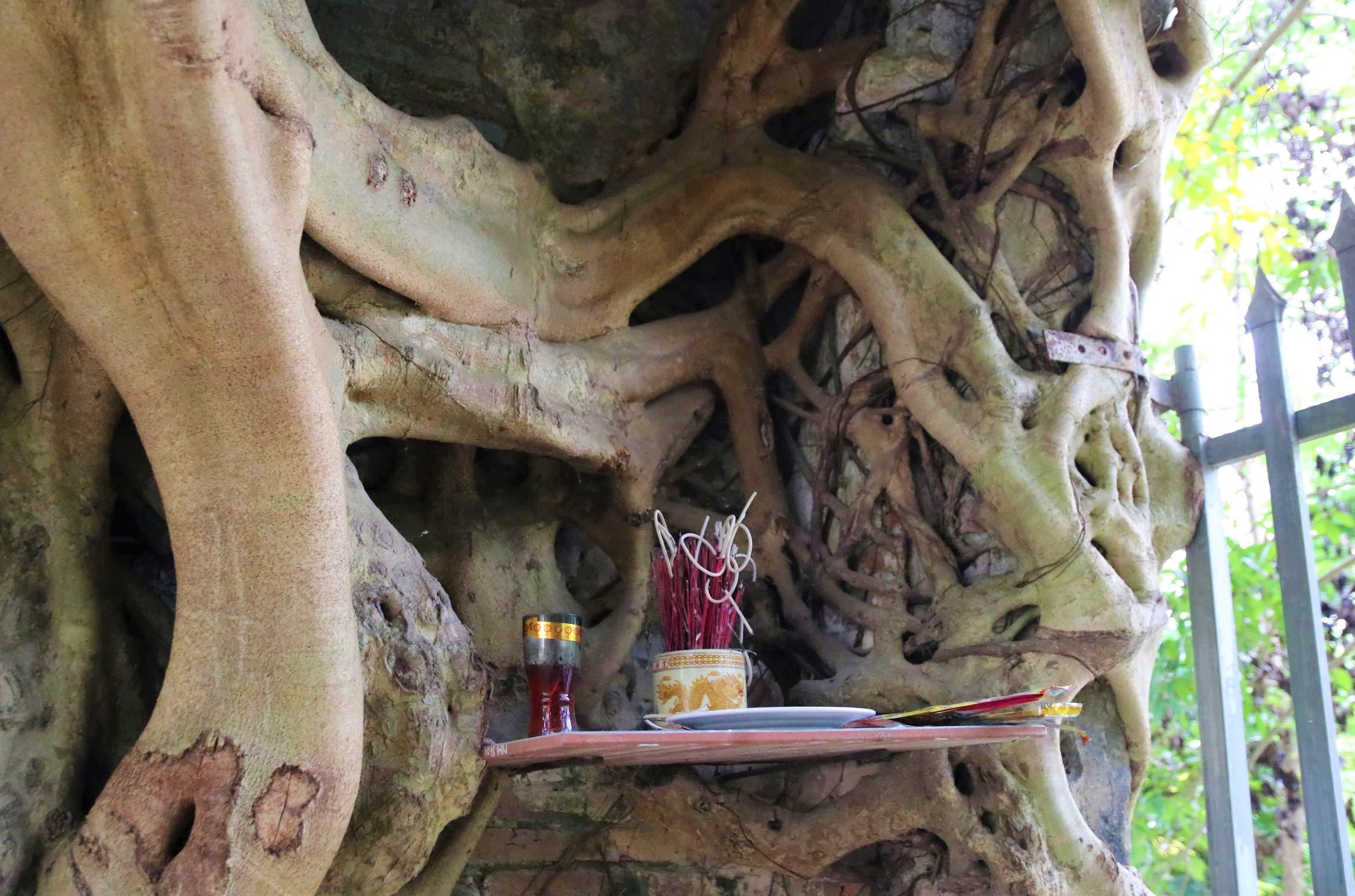
Under the arch of the Tuong Palace gate, local people set up a small altar to burn incense and pray for peace. Photo: NT
Speaking to Dan Viet reporter, Mr. Vi Van Hoang - Deputy Head of the Department of Culture and Information of Tuong Duong district, Nghe An said: Tuong Palace Gate is a district-level cultural relic. Over time, as it deteriorated, the district has implemented measures to reinforce and prevent landslides. At the same time, it directed Xa Luong commune to complete the process of restoration and renovation.
The Tuong Palace Gate stands majestically and silently facing the river junction, creating a wild and majestic beauty. Opposite the Tuong Palace Gate is Cua Rao Temple. This place has become a tourist destination not to be missed when visiting Western Nghe An.
Source: https://danviet.vn/mot-cay-co-thu-la-liet-re-xoan-xuyt-nhu-ngan-con-ran-to-bu-om-lay-mot-di-tich-tam-linh-o-nghe-an-20250226164410175.htm































































































![[Infographic] In 2025, 47 products will achieve national OCOP](https://vphoto.vietnam.vn/thumb/402x226/vietnam/resource/IMAGE/2025/7/16/5d672398b0744db3ab920e05db8e5b7d)





Comment (0)